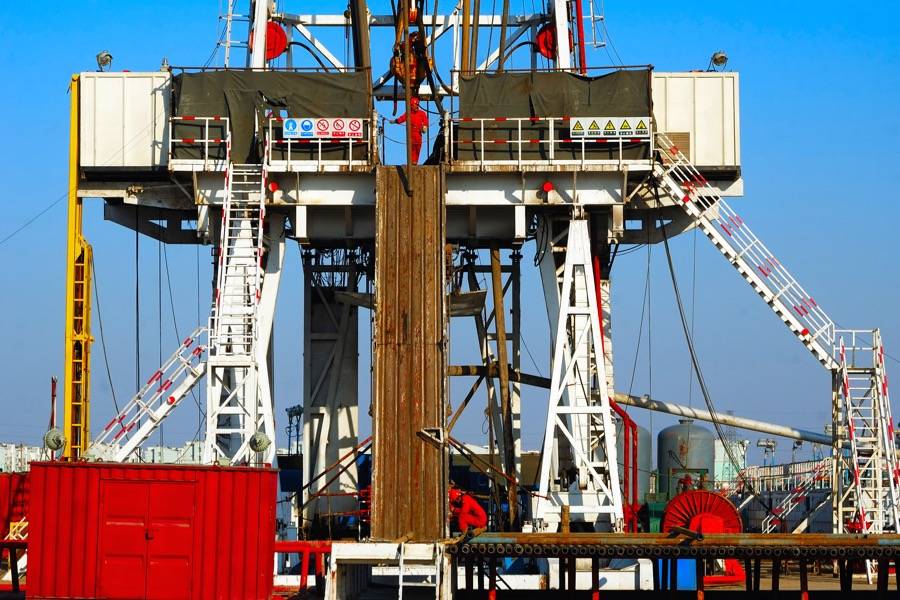By: Eric Roth (Rig Integrity Global), Dave Taylor (Relentless Pursuit of Perfection)
In this two part series, we are looking to dig deeper into the subjects of optimal performance and operational safety at the front line, beyond engineering aspects and processes.
During our last article with Phil Smith (How the Improvement of Operational Integrity, Safety, and Human Factors Equals Excellence in Performance, published on 12 Sept 2017), we covered some aspects of human psychology and human factors, and their potential for practical refinement in the field. In this article we take the concept a step further and start to flesh out the potential areas and actions steps that can be worked on.
First, let’s quickly recap what we covered in the first article of this series…
Training in the key Human Factors elements assists to bring the value of Well Operations Crew Resource Management into focus:
1) Situational Awareness
– Developing and maintaining a dynamic awareness of the situation and the risks present during a Well Operation.
2) Decision Making
– The heightened ability to reach a judgement or choose an appropriate option to meet the needs of an assessed or anticipated situation.
3) Communication
– The efficient exchange (transmission and reception) of information, ideas and beliefs, by verbal and non-verbal methods.
4) Teamwork
– The core ability to work effectively and interdependently in groups of two or more to achieve a shared goal.
5) Leadership
– The ability to successfully influence others to achieve a shared goal by providing guidance, direction, coordination and support.
6) Other external factors which affect human behavior
– Many factors affect the ability of people to perform reliably. These include stress, fatigue, health, distractions, and environmental stressors.
(Refer to IOGP 502, for the specific details and implementation of the above guidelines.)
Once people understand the Human Factors components above, how do we apply them together with the Technology and Process/Procedures at the rig or well site to get jobs done efficiently at peak performance and safety?
Now, Dave and I discuss an additional layer of the puzzle. Let us consider the use of what some Dave’s company (Relentless Pursuit of Perfection) calls ‘Living the Limit’ ( https://rp-squared.com/rp²-approach/technical-limit/ ). Other terms used to describe similar principles are ‘Technical Limit’, ‘DTL’, and ‘The Perfect Well’.
They entail the emphasis of the following Enabling Environment principles, first espoused by the Technical Limit pioneers at Woodside Petroleum (refer OTC paper No. 8637, ‘Setting & Achieving Technical Limit Goals in Well Construction by Enabling the Talents, Energies and Attributes of People’, by PW Scott and DF Bond, Woodside Offshore Petroleum Pty, May 1998).
This has been further refined by Dave over the subsequent years:
1) Trust and Respect for Each Other
– Following selection, training, and induction, team members are trusted to do their jobs as required, and given the autonomy to do so. (Empowerment. Also remember here the old saying – ‘Trust, but Verify’)
2) Open Communication with one another
– This is the sharing of information within project / on-site teams who are involved in the work being carried out. It is based on the premise of ‘shared knowledge is more powerful than individual knowledge’. Effective communication is one of the most basic yet important factors in performance and safety excellence, and still one of the most difficult to get teams to do enough of.
3) Clear Priorities
– These clearly stated priorities must be results focused and aligned to overall objectives (what we are doing vs how it contributes to the project goals). Clarity in project goals is a critical factor for success.
4) Valuing Every Team Member
– Don’t confuse this one… It does not mean that every role should be compensated at the same rate… It means that every role is important, and when crew members receive appreciation for what they do, they will typically respond by becoming more dedicated. This is human nature.
5) Full Disclosure (Transparency)
– Disclosure refers to the operational transparency of faults, errors, near hits/misses, and unsafe acts. We’re not looking for blaming and shaming here. We should be looking for how to fix or address what has occurred, to prevent recurrence. It also applies to sharing ideas and knowledge.
6) Alignment and Engagement with overall project goals
– Ultimately, performance excellence is achieved when all team members, both at high level and at lower levels, are committed to the objective. No, this one is not easy to achieve, as it involves the daunting task of aligning both office and site team members. That is where there are very few ‘High Performing/High Reliability Organizations’ out there, and why they strive for perfection.
7) Taking Responsibility (Personal Accountability) for One’s Personal Growth
– This is simply taking responsibility for our own learning, both formal and informal. It’s not the job of your employer, crew, or team to educate you – it’s your job to educate yourself. if this means asking others for advice, sharing knowledge, or giving it when asked, then great.
8) Supporting One Another
– Here’s an area where we can see performance improvement… By supporting people both when they do well, and when they admit to errors, then giving constructive feedback (criticism with empathy) on how they could improve. This is an element of good leadership.
9) Eradication of cross-company and employment boundaries
− Ideally a casual observer would not be able to differentiate between the various companies and employment status of the individuals involved. After all, loyalty is to the team and the shared outcome. This is achieved when everyone believes that, not only do they have their part to play, but that they have fair access to the tools and support that they need.
10) Celebrate Successes
– Significant success milestones, large and small, with teams and individuals. This goes a long way towards motivating personnel to continue performing to their potential, and it helps keep morale high.

Just as relevant to Drilling & Well Operations in Performance, Operational Integrity, and Safety, as in other industries
So what does one have to do with the other? And how do we know that the above elements, combined, are effective at improving performance, integrity, and safety?
The engineers within and amongst us may be skeptical. However, when we’ve conducted root cause investigations into incidents and anomalous events or ‘train wrecks’, many of the same or similar issues (or lack thereof) have contributed to things not going as planned. This could be anything from a fatal accident on the drill floor, to suffering high NPT rates for a wells project. Once these root causes were systematically captured, addressed / actioned, and followed up with, the trends for occurrences reduced.
Principles similar to these are not new or unique to our industry. Some industries consider them crucial to effective overall Project Management (although, admittedly, the terminology differs somewhat). In the energy and oil & gas industry (including drilling & completions), it’s referred to as Technical Limit. At the core, it’s a form of Systems Management.
The technical terms and processes themselves are well known within those communities, and the purpose of this article is not to define those exact processes. Here, our intention is to convey the fact that there are human elements and soft skills involved, which are important to the outcomes at the end of the day and have an impact on longer term integrity and performance.
The systems that we use at our Peer and After Action Reviews (first pioneered by the military), during pre-activity workshops (such as HAZOPs and DWOPs) and our in-field coaching embrace the elements above. Getting everyone involved in perfecting things is at the very heart of how we conduct ourselves.
We’re still learning from further research and case studies, with the collective goal of improving on what’s been achieved before.
Make no mistake – optimal performance, operational integrity, and safety excellence is not easy, and there’s always more work to be done. However, this is a key purpose of striving for continuous improvement and a relentless pursuit of perfection.
In ancient Greek (the age of Aristotle, Plato, and the Stoics), there was a word called ‘Eudaimonia’ which was translated a few different ways, such as ‘The good composed of all goods’; ‘an ability which suffices for living well’; ‘sufficient resources, or perfection in respect of virtue and value provided to an endeavor’. Essentially this is the pursuit of excellence, both in our lives and the work we do for the good of others…
With clear expectations, thorough team planning and preparations, effective supervision and a relentless review of the outcomes, perfection itself may still not be achieved, but every element of positive change moves us towards that goal. It’s the role of industry leadership to continue on this path.
See you in the field!
Relentless Pursuit of Perfection (rp2)
“The Leaders in Performance for the Wells Community”
Rig Integrity Global Services (RIGS)
“On Land and at Sea, Integrity is our most Critical Asset”







